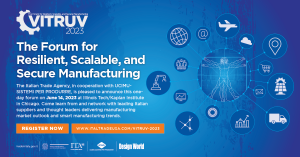Sometimes it takes the cooperation of individuals across oceans to make great things happen. This year, as America watched with sadness as its shuttle program was canceled, senior level students at Embry Riddle Aeronautical University (ERAU) in Daytona Beach, FL, USA sought the help of their friends and engineers at Meccanotecnica Riesi S.r.l in Sicily, IT to keep space exploration relevant.
Embry Riddle strives to prepare its students for their careers in Aerospace while also lending its research facilities to the growth of the Aerospace industry itself. To fulfill both of these endeavors, ERAU launched a project to develop indigenous low-earth orbit capabilities and technologies that would ultimately provide a space-capable experiment service for its students, other local universities, and the space industry.
An additional component of this project—known to ERAU students and participating companies as Project Aquila— is to develop a system that employs cryogenic liquid rocket technologies: an innovative system which uses liquid rocket fuels for the purpose of increasing vehicle reusability. Project Aquila was assigned to students in the Senior Design class as well as in the Experimental Rocket Propulsion Labs (ERPL) club. ERAU’s Senior Design class, taught by Dr. Eric Perrell, has began its multi-year task in 2009 and is still in progress.
{pagebreak}
The project’s initial phase, Project Artemis, consisted of technology research development and the construction of the Escape Velocity One engine (EV-1). This engine is capable of about 500 pounds of thrust and uses liquid Nitrous Oxide and Methane as the oxidizer and fuel respectively. The second iteration of the project, led by the Aquila Liquid Propulsion Development Team, built upon the knowledge developed by the EV-1 team to design a newer engine in tandem with the older engine. The revised objective became to continue EV-1 motor testing and refinement while the newer motor pushed the boundaries of scale and design.
The second engine, called the Escape Velocity Two (EV-2), was designed for 1500 pounds of thrust, operates with cryogenic methane and oxygen, and was made possible by a partnership with Meccanotecnica. According to Aquila Project design, the Sicilian manufacturers produced the chamber liner and the methane manifold, and also provided the students with materials and services. The methane manifold is responsible for the distribution of the fuel into the combustion chamber and to allow the oxygen to pass through it.
The combustion chamber, also known as the chamber liner, is responsible for being both light weight and heat resistant. The current design calls for regenerative cooling channels that run from top to bottom to help keep the chamber liner cooler that 700K. Ultimately, the chamber liner and the methane manifold each required the expertise of an experienced manufacturer in order to produce the tight tolerances required by the interface between two parts, considered to be the “heart” of the engine.
{pagebreak}
To date, Project Aquila has completed all its manufacturing designs; assembly is currently paused for the summer due to funding limitations and lab time. The development of cryogenic liquid propulsion systems typically require 5 to 10 years of research and development, and generally begin with small test motors of 50 pounds force. However, the ERAU students began with 500 pounds of force and have expanded to 1500 pounds of force in just 2 years’ time. The team believes that a modification to the EV-2 motor would allow for a quick turnaround into a flight version; however this will require at least 2 more years of work. The Project Aquila students and the workers at Meccanotecnica share their excitement in soon achieving the technology required to reach low-earth orbit. And waiting to see their parts revolving around the hearth MR staff receives the Aquila team appreciation.
“The parts manufactured by Meccanotecnica surpassed all expectations. Their ability to quickly respond and keep the team up to date with manufacturing went a long way in terms of our strategic planning. When compared to other work that had been done for us, from both the US and China, it is clear that Italian manufacturing is a notch above the rest. I look forward to working with Meccanotecnica in future.” -Oreste Giusti (Part of the Liquid Propulsion Development and Upper Stage Integration Teams) “The machined parts are a work of art – there are no inconsistencies in the design. We received a part from another company that looked like a child made it.
This part from Meccanotecnica truly shows quality in the smoothness and it’s hard to imagine the part was machined.” -Miguel Rivera (Part of the Liquid Propulsion Development and Upper Stage Integration Teams) “The Aquila team worked very hard to design the chamber liner and methane dome so it was great to see that the parts were fabricated brilliantly. Meccanotecnica was very generous and cooperative and helped the project a lot through its involvement.”
{pagebreak}
Gauri Patel (Part of the Liquid Propulsion Development Team) “The parts sent over were of the highest quality, and will no doubt contribute to the success of the Aquila Project. The parts were machined to the highest quality, and interfaced perfectly with other parts created in house, such as the spark torch igniter body. Having seen the parts myself, I could see no blemishes or defects in even the smallest sections of the parts.
Meccanotecnica did a hell of a job with those parts, and I would be more than happy to arrange purchase orders from them in the future, even beyond the confines of Project Aquila.” -Jason Jayanty (Part of the Liquid Propulsion Development Team) “The finished product surpassed all our expectations: the quality of work and the attention to detail could not have been better.” -Dr. Eric Perrell (Professor of the Senior Design Class in charge of Aquila Project)


























